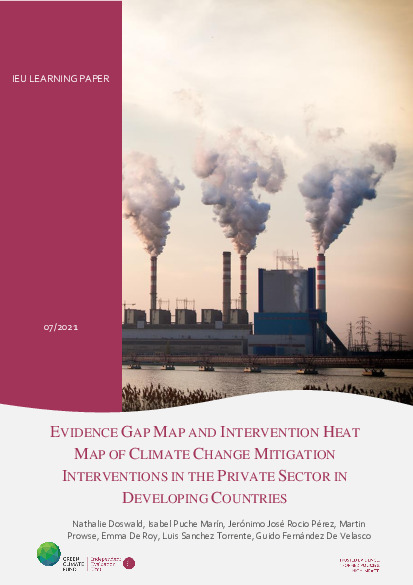Evidence gap map and intervention heat map: Climate change mitigation interventions in the private sector in developing countries

Download
English |
PDF |
1.36 MB
Evidence gap map and intervention heat map: Climate change mitigation interventions in the private sector in developing countries
This evidence review describes the evidence base on private sector investment in mitigation and describes the modes of funding for mitigating greenhouse gas emissions.
Authorship
Nathalie Doswald, Isabel Puche Marín, Jerónimo José Rocio Pérez, Martin Prowse, Emma De Roy, Luis Sanchez Torrente, Guido Fernández De Velasco
Cover date
July 2021
Document type
Learning paper
Table of contents
Part I. Evidence Gap Map of Climate Change Mitigation Interventions in the Private Sector
- Introduction
- The EGM Framework
- Review
- Data Coding and Analyses
- Results
- Discussion
- Limitations
- Recommendations
Part II. Intervention Heat Map
- Introduction
- Methods
- Results
- Discussion and Implications